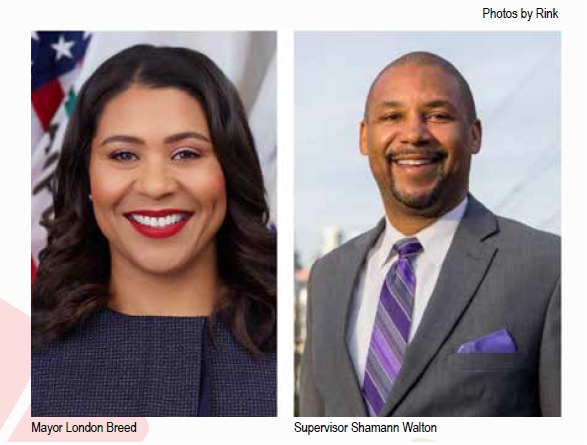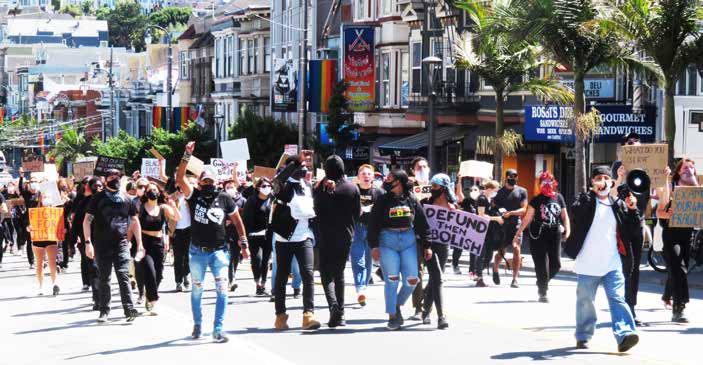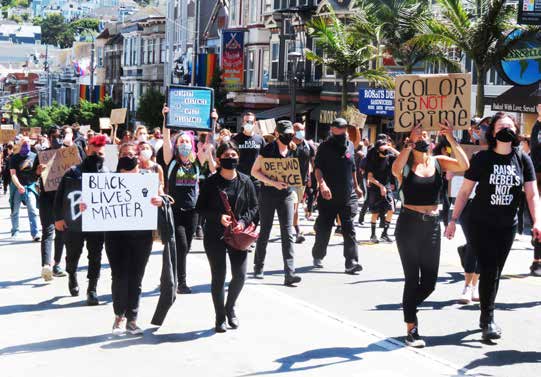
Mayor London Breed and Supervisor Shamann Walton in June announced their intention to redirect funding from the police department into the Black community following the killing of George Floyd during a police arrest in Minneapolis—a death that sparked protests worldwide. Now Mayor Breed and Supervisor Walton are taking the next steps in their effort with guidance provided by a Human Rights Commission (HRC)-drafted report, which was released on July 27.

The report takes into account several problems that particularly impact the LGBTQ Black community. For example, it mentions:
Nearly all of us are experiencing unprecedented tough times now as a result of the coronavirus pandemic and related economic crisis. Add to that generations of unresolved racial and social injustices and you have communities that at various times feel paralyzed by fear and compelled to protest. As San Francisco Bay Times columnist Derek Barnes wrote last month: “And if you are Black or Brown and LGBT, it probably feels like an overwhelming assault and offense from every conceivable direction. I know it does for me.”
Problems that are decades in the making will clearly take time to effectively address, but the new detailed report marks an advancement in the right direction and provides a basic framework for tackling many challenges one by one.

Mayor Breed soon will announce the amount of funding being reinvested as part of her proposed budget, which must be submitted by August 1. In addition to investing in new programs, the Mayor has also prioritized maintaining and enhancing Black-serving organizations, despite the need for broader cuts in this year’s budget to address the $1.5 billion deficit.
The report at least provides an in-depth guide for ongoing conversations and decisions to reinvest in San Francisco’s Black community. It will not only help to inform where and how City funding should be reinvested in the upcoming budget for Fiscal Years 2020–21 and 2021–22, but it will also aid in formulating policy changes and budget investments.

“If we truly believe that Black Lives Matter, then we need to listen to Black voices, not tell Black people in this city and this country what is best for them,” Mayor Breed said. “That includes listening to those who have long lost faith in City Hall to actually deliver on promises that are so often made, but not kept. While protests have happened all over the world to support the movement to change the racist systems that have long plagued our country, it is time to do the hard work now and into the future. Over the past month we initiated a process to hear directly from residents so we can begin the move for real, tangible changes in addressing the systemic issues facing our community. This is only the first step in a long process to bring resources and accountability to our community that has for decades been underserved, underrepresented, and ignored.”
“The only way to address some of the systemic issues that have negatively affected Black people and have existed for decades in our city, is to make a sizable investment in the Black community that will lead to real change,” said Supervisor Walton. “Having Black voices take the lead on the process for reinvestment in our community is key to developing strategies that lead to tangible outcomes. I’m excited to share what the Black community has identified as priorities, so that we as policy makers can make the resources available to achieve tangible results. With reparations, the redirection of SFPD resources and community truly taking the lead, this is only the beginning.”
“Our community engagement process captured a spectrum of participant sentiment, from disheartened community members who have gone through this before, only to be let down, to those with renewed hope that the historic moment we are living in will bring real change,” said HRC Director Sheryl Davis. “Racial equity becomes real when we appropriately meet community needs and racism no longer determines outcomes for our residents. It’s clear that Black people want and deserve better public service from their City and we have been falling short.”
Investing in San Francisco’s Black community is necessary to repair the legacy of systemic racism and resolving the disparate outcomes in economic opportunity, housing, and health indicators for Black people in the City. Consider these significant structural inequalities that need to be addressed and remedied:
In order to make lasting, structural change in the City’s policies and budget investments, community engagement must be ongoing and sustainable. HRC documented emailed comments, hosted online meetings, and created a short survey for initial thoughts and feedback. More than 600 people participated in some capacity in the process. The report includes a recommended timeline for ongoing community engagement.
Next Steps
HRC will host two community meetings to gather additional feedback and recommendations to add to the report. In September, HRC will launch monthly community meetings to review progress on recommendations and build out implementation plans with legislators through a working group. In October, HRC will launch quarterly meetings to share updates with the public on the report. The current version can be read in its entirety at:
https://sf-hrc.org/sites/default/files/Reallocation%20of%20City%20Funding%20Report.pdf
Published on July 30, 2020
Recent Comments